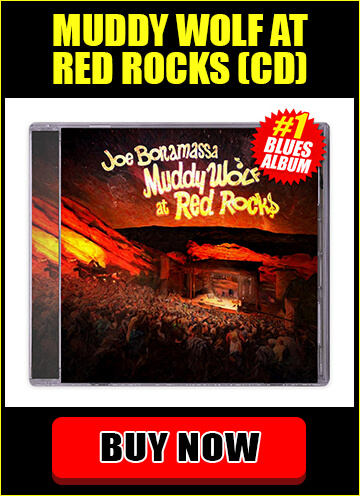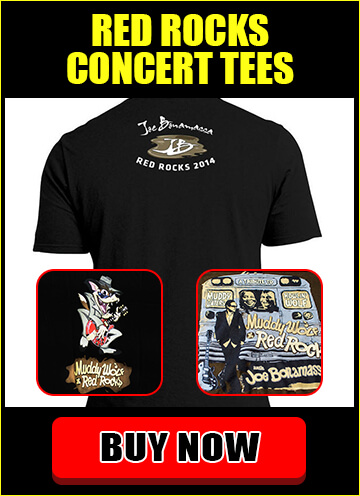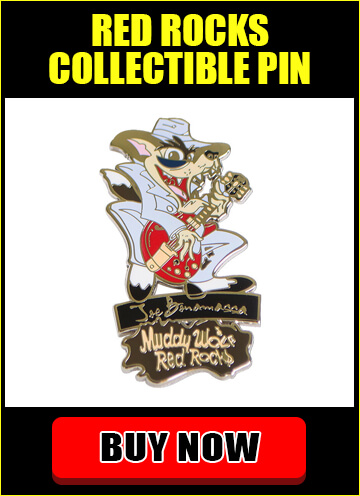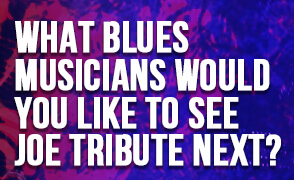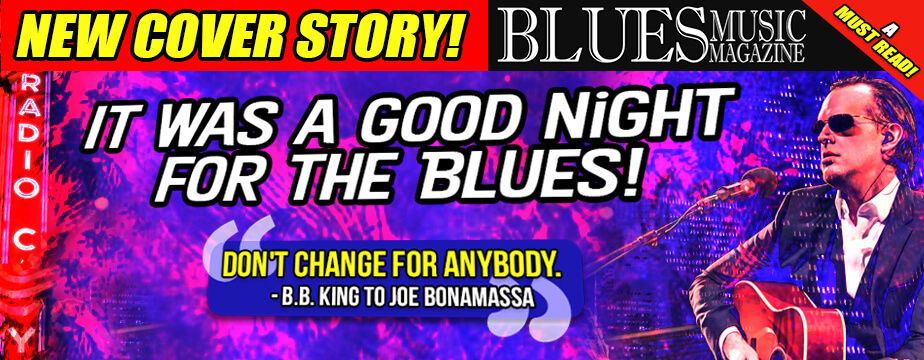

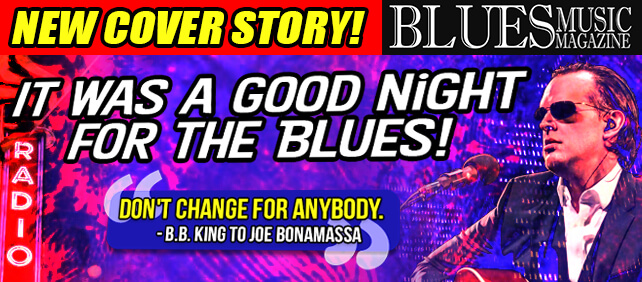


As we wring our hands over the future of the blues and its graying audience, Joe Bonamassa is meeting the task head-on by injecting his hungry fan base with a jolt of the blues. I might be out on a limb here, but I would venture to say that in the last 12 months Joe Bonamassa’s 2014 tribute to Muddy Waters and Howlin’ Wolf and his 2015 Three Kings Tribute will expose more music fans to traditional blues than ever before.

If you are a blues traditionalist, you may not have enjoyed Bonamassa’s tribute last August to Waters and Wolf at Red Rocks, however, if you are a blues enthusiast, you have to be excited at the fact that Bonamassa is singlehandedly introducing tens of thousands of his fans to the classic blues he loves.
Here are some numbers to back this up. Playing a mix of large venues with pavilion and lawn seating to smaller, more intimate shows that seat a few thousand, his 15 amphitheatre dates on the Three Kings tour in August 2015 have the capacity to reach close to 100,000 fans. If only a small percentage leave these shows and search out the music of Freddie, Albert, or B.B. King, isn’t that a major win for the future health of the blues?
It should come as no surprise that last August 2014, Bonamassa would fill Red Rocks’ 9,500 seats. What is surprising though is that Bonamassa only played five of his songs. The other 15 songs on his set list were a Chicago blues tribute to icons of the genre, Muddy Waters and Howlin’ Wolf. This easily could have been a blues-rock celebration of all things Bonamassa, instead 9,500 fans were dancing in the aisles to Muddy’s “I Can’t Be Satisfied” or “Real Love”; Willie Dixon’s “Tiger In Your Tank” or “Hidden Charms”; and Howlin’ Wolf’s “Killing Floor” or “All Night Boogie.”
Get the DVD and look at the crowd. It isn’t a typical blues demographic; it’s an energetic Bonamassa audience, men and women between 40 and 50 years old, who came to hear blues-rock, Bonamassa-style, but instead went home to search out the music by Waters and Wolf.
With his nine-piece band dressed in a style to honor Muddy and his band from his performance at the Newport Jazz Festival in 1960, Bonamassa continually enlightens the crowd about the importance of these two musical giants. To deepen the lesson, he began each tribute with a film clip of either Muddy or Wolf who explained the meaning and origins of their blues. They began a well-known song, which cross-faded into Bonamassa’s band picking up the song from the masters to the roars of the crowd.
What Bonamassa (and I) hope is that during that search, those fans might also discover Willie Dixon, Little Walter, Hubert Sumlin, Jimmy Rogers, Otis Spann, Pinetop Perkins, Eddie Shaw, Henry Gray, and then onto maybe Chess Records where they can discover Koko Taylor, Sonny Boy Williamson II, John Lee Hooker, Buddy Guy, Little Milton, and on and on.
Many, many blues musicians cover the tunes of Waters and Wolf in show or on record, the difference here is that in one night, these 15 songs reached close to 10,000 fans who never immersed themselves into this iconic music, probably never went out to a blues club or festival. Couple that with the sales of either the DVD or CD, postings of songs from that show on his Facebook page (2.3 million likes) or YouTube, downloads of individual songs on his website, and the music of Waters and Wolf will have reached the largest audience it has ever reached in a one year period.
As Bonamassa and his producer Kevin Shirley discussed the approach for the show at Red Rocks, they both understood that this night deserved something special. Because most Bonamassa efforts are recorded and filmed, they wanted to create an event more important than just recording Bonamassa’s usual set list. They kicked around a blues show. When Shirley suggested a tribute to Muddy Waters and Howlin’ Wolf, Bonamassa was all in.
Joe Bonamassa: “I came off the stage saying that the best part of the night was that it was a good night for the blues. The people didn’t know what to expect. They were asking who Muddy Waters was. They just wanted to hear ‘Sloe Gin.’ Then they heard the blues. To me, it’s proof of the concept that the blues isn’t dead, that there are fans of this music who can still be reached out to, and that if you build it, people will come.”
To properly build this night, Bonamassa assigned himself weeks of hard study. First he concentrated on their individual catalogues, chose songs, learned individual songs, rehearsed songs, arranged songs, rehearsed with the band, and prayed he could pull it off. “Those are two pretty big catalogues, so the song selection process took me about a week to put the catalogue together and to learn the songs.” I stayed at home and sang through the tunes. Then I mapped out the lyrics to make sure I had the correct lyrics.
“I also kind of modified a few of the keys to suit my voice. Both of these catalogues are hard singing. I want to put myself into the vocals, but at the same time I wanted to pay tribute. Then we had three days to rehearse, two warm-up shows, and then the gig.
“On guitar, I sound like I sound, but I changed my guitar rig purposely. There’s no sense in my using a Marshall amp and my rock rig at a blues show. I wanted to use the equipment that would serve the song and the music. I kinda came from that point of view. I also wanted horns on these songs. I always remember back to when my dad would take me to blues festivals to see great bands with big horns like Roomful of Blues or B.B. King. To play a shuffle in that format is one of my favorite things.
“At the moment, I’m in a traditional blues frame of mind. Much of my current show is a blues show. So a lot of these songs have crossed over into my show.”
But all too quickly the adrenalin from that night ended and Bonamassa and Shirley began to entertain new Tribute ideas.
Enter the Three Kings.
Bonamassa: “My biggest regret is that we only did three shows. By the time it got going, it was over. I can’t do that again. I have to make sure I can do more shows for the Three Kings tour. We decided to do these amphitheatres. We’ll do between 4,000 and 6,000 every night, and we’ll fill up Red Rocks again. That’s a lot of people hearing the music of B.B., Albert, and Freddie King.
Now Bonamassa must immerse himself in three catalogues, study three vocal approaches, and understand three vastly different guitar styles.
Bonamassa: “The first King I learned from was B.B. I discovered him when I was eight years old. My first two albums I was allowed to buy with my allowance money were B.B.’s Live at the Regal and Steve Morse’s The Introduction, two completely different styles and approaches to guitar playing.
“Meeting him [B.B. King] when I was a 12-year old was very much like meeting royalty. I opened for him when I was 12. I did one nighters and then I also toured with him. When I opened for him, he’d get reports from the crowd that they were enjoying it, and his advice to me was to keep doing what I was doing. ‘It’s a hard business to be in, but if you love it, keep doing what you’re doing. Don’t change for anybody.’ He also drove home the point to ‘Watch your money’.

To Read more of Joe’s Article and the rest of Issue 7 click here for your Free Digital Mag from Blues Music Magazine: http://www.pageturnpro.com/MojoWax-Media-Inc/62458-JB--Blues-Music-Magazine-Issue-Seven/
